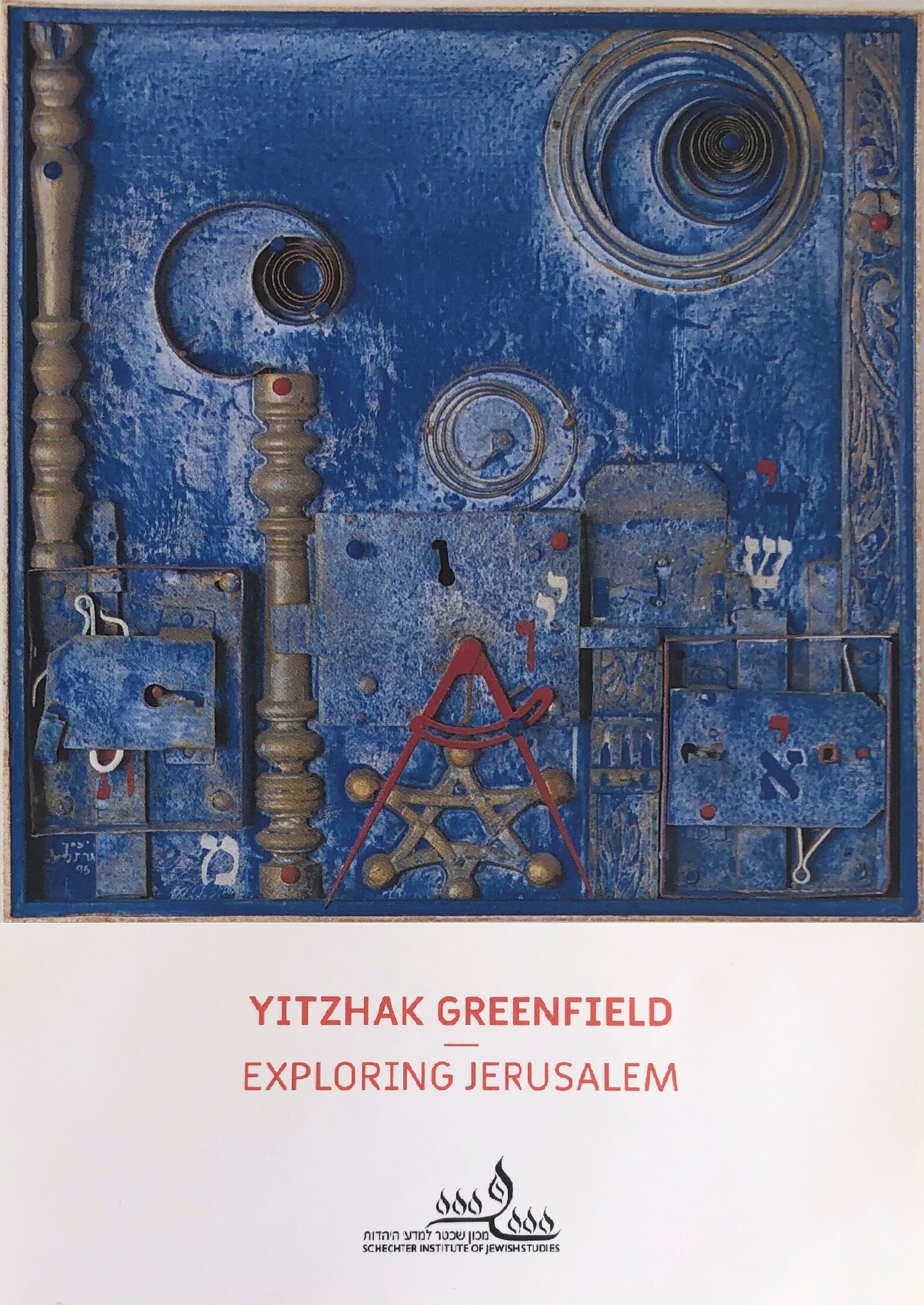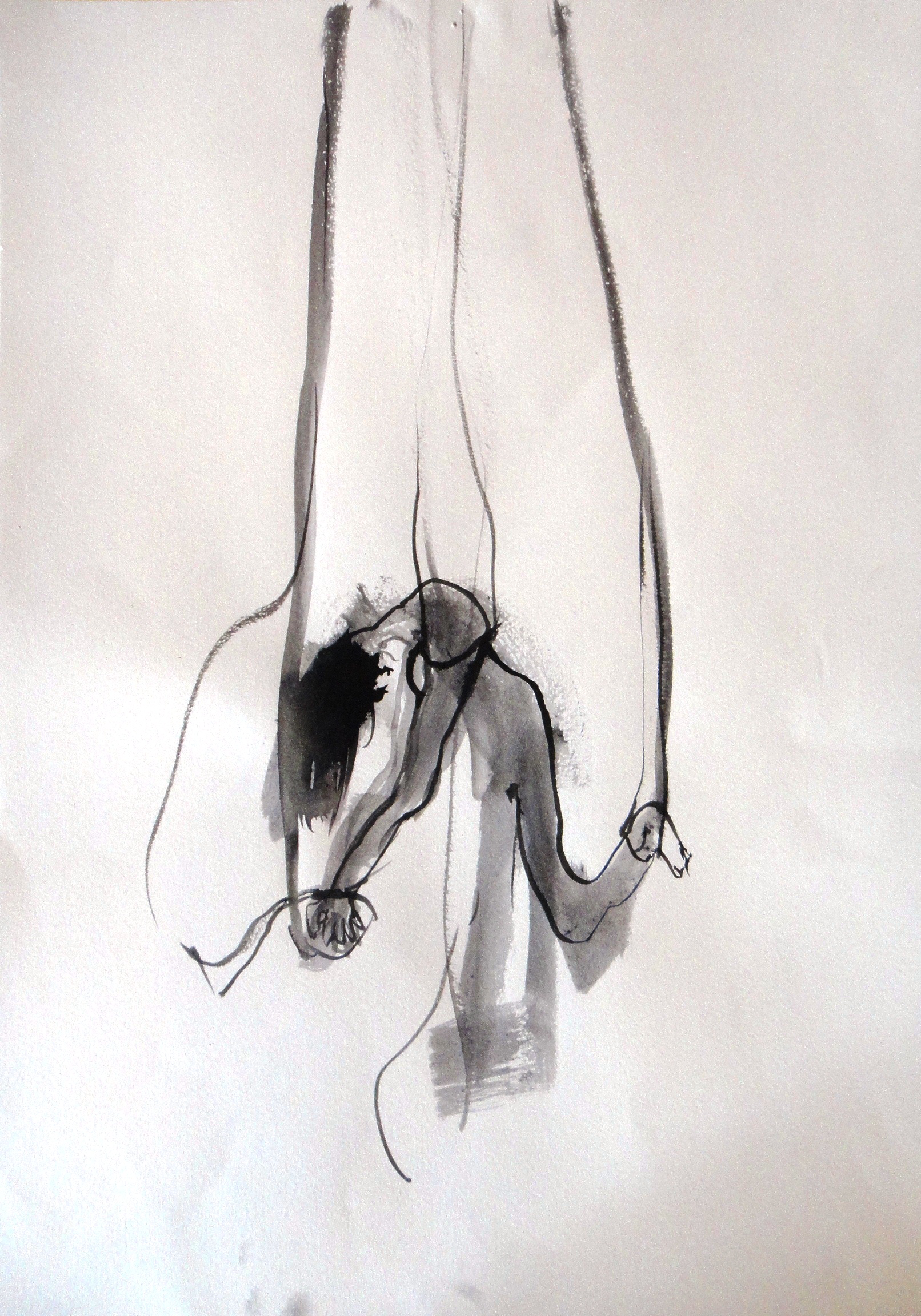Curatorial Writings
Belle Shafir and Hanna Ellert: Split Paths of Time
“Art is longing. You never arrive, but you keep going in the hope that you will. -Anselm Kiefer
Suspended strands of crocheted horse hair create an enchanted forest, while tiny iridescent portraits flicker like stars beyond. Vibrant threads and yarns are intertwined with ready-made objects, forming cocoon shape structures that climb the walls. Transparent drawings and fabric-like layers are woven into rich, colorful tapestries that hang from high above, as dangling, asymmetrical fringes tickle the floor. Figures and silhouettes take shape from bleeding stains of ink and watercolors, while sounds of hooves and the neighing of horses accompany animated drawings. These are the creations of the artists Belle Shafir and Hanna Ellert in their joint exhibition Split Paths of Time and they reflect the sediments of the past as they drift in the memory of each artist. More
Itzhak Greenfield: Exploring Jerusalem
The Colors of His Life
On a secluded street in Ein Kerem, stands a building of Jerusalem stone, caressed by the leaves and sweet, aroma of a one-hundred-year-old fig tree heavy with fruit in the summer sun. Once an olive oil factory and flour mill, it is now the home and studio of artist Yitzhak Greenfield. Upon entering the gate, down a narrow, shadow spotted path that leads into a Provence style garden, and into the artist's studio, one cannot help but notice the vibrant and bold colors of the abundant art work in this space. These are the colors of Greenfield’s Jerusalem, the colors of his life.
Majestic scenes in blue, gold and indigo, radiating spheres and grand expanses hover above architectural forms and clusters of Hebrew letters, revealing dreamlike realities. These are the creations of Yitzhak Greenfield who works in watercolor and acrylic paints layered with collages of painted papers, discarded book materials, and fragments of his own prints. Applying parts of broken furniture, clock springs, iron locks and keys, the artist forms assemblages that hint at familiar settings, resonating the past. For Brooklyn born, Israeli artist Yitzhak Greenfield, these visions are the essence of the Jerusalem landscape, inspired by the city’s ever-changing magical scenery. More
Haim Maor | Amending Memories
"The life of the dead is placed in the memory of the living." — Marcus Tullius Cicero
Memory is the process in which the brain receives, processes, stores, and retrieves information. The mind, as with a computer, places information it regards to be important into a memory footprint or ‘file’ each time we remember something. However, this process does not always work perfectly. With age, it may take longer to retrieve the correct ‘file’ or to find the place where it was stored. In addition, not only do our memories degrade with time, they also change each time they are recalled. The slightly changed memory is then perceived as the ‘real’ memory. This process is more similar to a story that is edited each time it is told. With each re-telling, the story is altered along with our feelings.
The awareness of increasing forgetfulness as we age, the fear of losing our memories, and our identity are all issues that motivate the artist Haim Maor, as reflected in his artwork in the exhibition Amending Memories. More
Wings of an Angel | Hanna Ellert
The everyday objects that surround us in our daily lives tend to characterize us. The things we choose to keep close to us, in our personal space are objects we have carefully chosen have been given to us or were accumulated throughout the years. Some objects are more special to us than others, yet all have been saved for some reason or another. Hanna Ellert is inspired by the everyday objects that surround her, and she incorporates them in her art. By placing them in a new context, she transforms their original meaning. Chocolate bar wrappers, eyeglass cases, jewelry, figurines of small birds and angels are some of the “ready made” objects that can be found in her work. However, it is not the objects alone which define Hannah Ellert but rather how they work together with the dynamic lines in her artwork to express her inner feelings. Similar to the wings of an angel which symbolize freedom, nobility, afterlife, and an uplifting of the soul, Ellert’s art work elevates her to a higher level, freeing her from her physical constraints, giving her strength and uplifting her soul. More
The Newspaper That Was | Last Edition
The origin of the use of newspaper in art takes us back to an exciting era of change. In the mid-nineteenth century, newspapers had been around for about two hundred years. Once afforded only by the wealthy, literate minority, new advances in printing and paper-making technology brought about a surge in newspaper development. The "Penny Press"; in America made it possible to produce a newspaper that sold for just a cent a copy, providing the availability of cheap, interesting reading material, a luxury now afforded by all classes. At around the same time, the Parisian daily, La Press cut prices by half, striving to achieve financial support primarily through the sale of space for advertising.
The industrial revolution transformed all aspects of life and society in the western world and had a dramatic affect on the newspaper. More
Superheroes on Newspaper | Last Edition
Gary Goldstein paints inside old books, or on pages from disbanded books that he buys at second-hand bookstores. He uses newspapers in his works, deleting, cutting, gluing together, painting, covering, and replacing one image or text with another. In this way, he exchanges one reality with another. His works constitute a quasi-private-diary, recorded in his own living room, in which he deals with questions of memory, identification and criticism. On the one hand, he thematizes the Holocaust, and on the other hand, he is also influenced by America’s popular and consumerist culture of the 1950s and 1960s. This combination reflects the reality in which he grew up, as an American child of immigrant Holocaust-survivor parents. More
The Camera's Eyes
“The Camera’s Eyes” is a group exhibition presenting the works of photographers living in Meitar. The exhibition explores the physical and formal attributes of a photographic print that form the tools photographers use to define and interpret the content of a photograph. More
Landscape Man | Erez Rota Sisoke
Erez Rota Sisoke’s exhibition Landscape Man, focuses on the Israeli landscape and how the artist relates to it. The landscape in Rota Sisoke’s paintings and sculptures tells his personal story of wandering, within the Jewish-Israeli reality and experience. His rapid and fluid brushstrokes, the strong contours, and the bold colorfulness of his paintings reflect his passion for the local landscape and how important it is to him, as vital as the air he breathes. More







